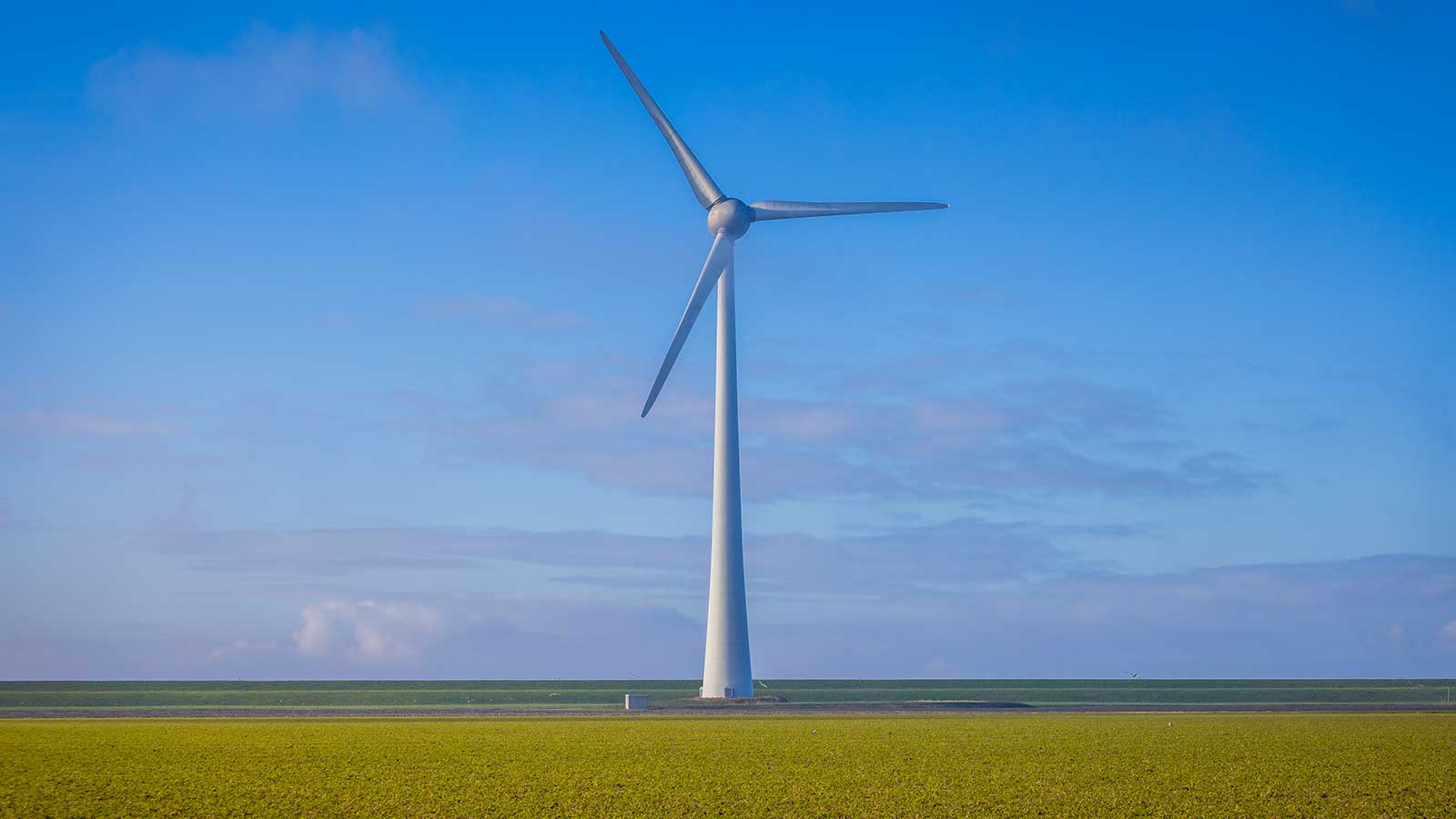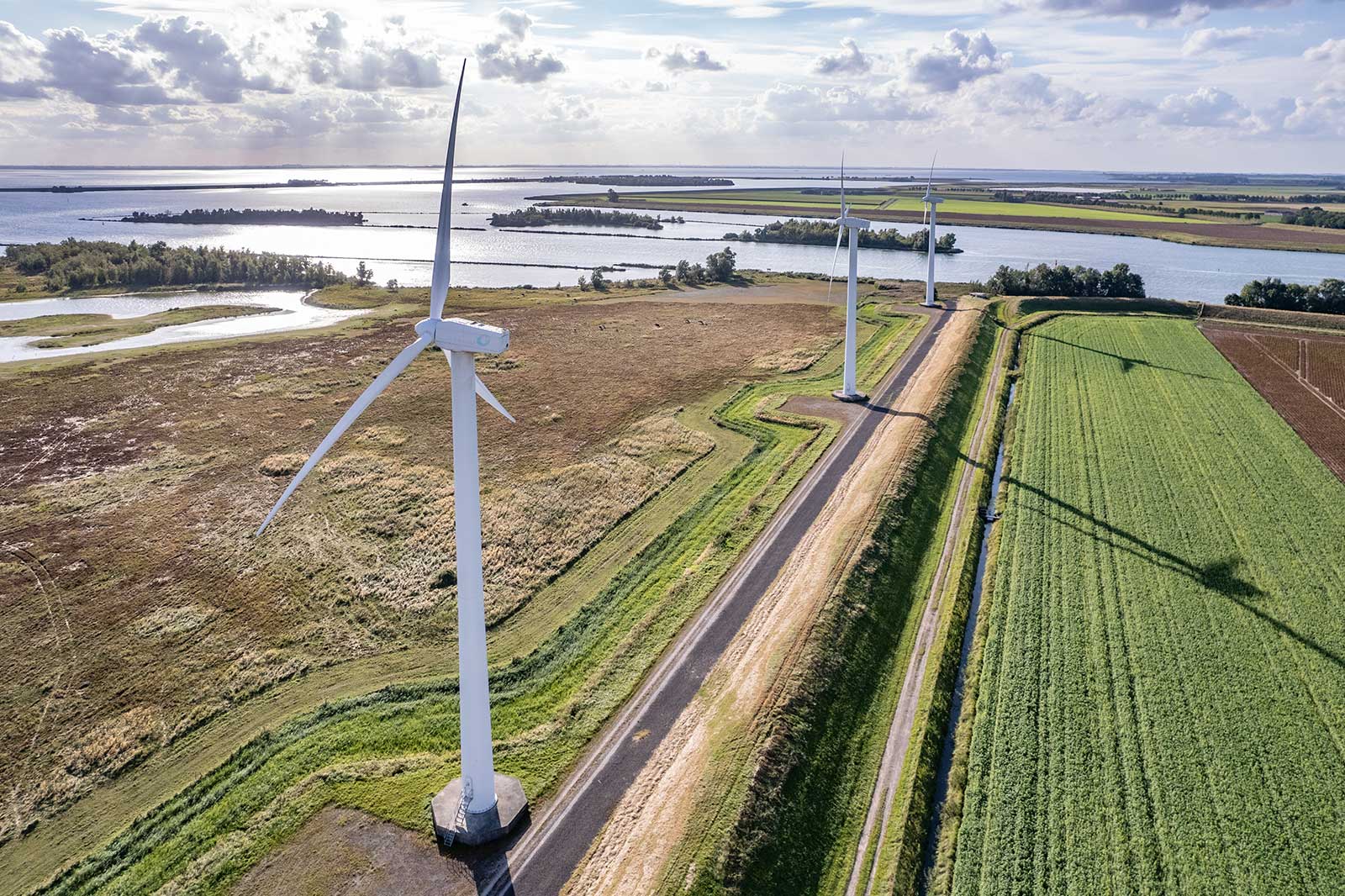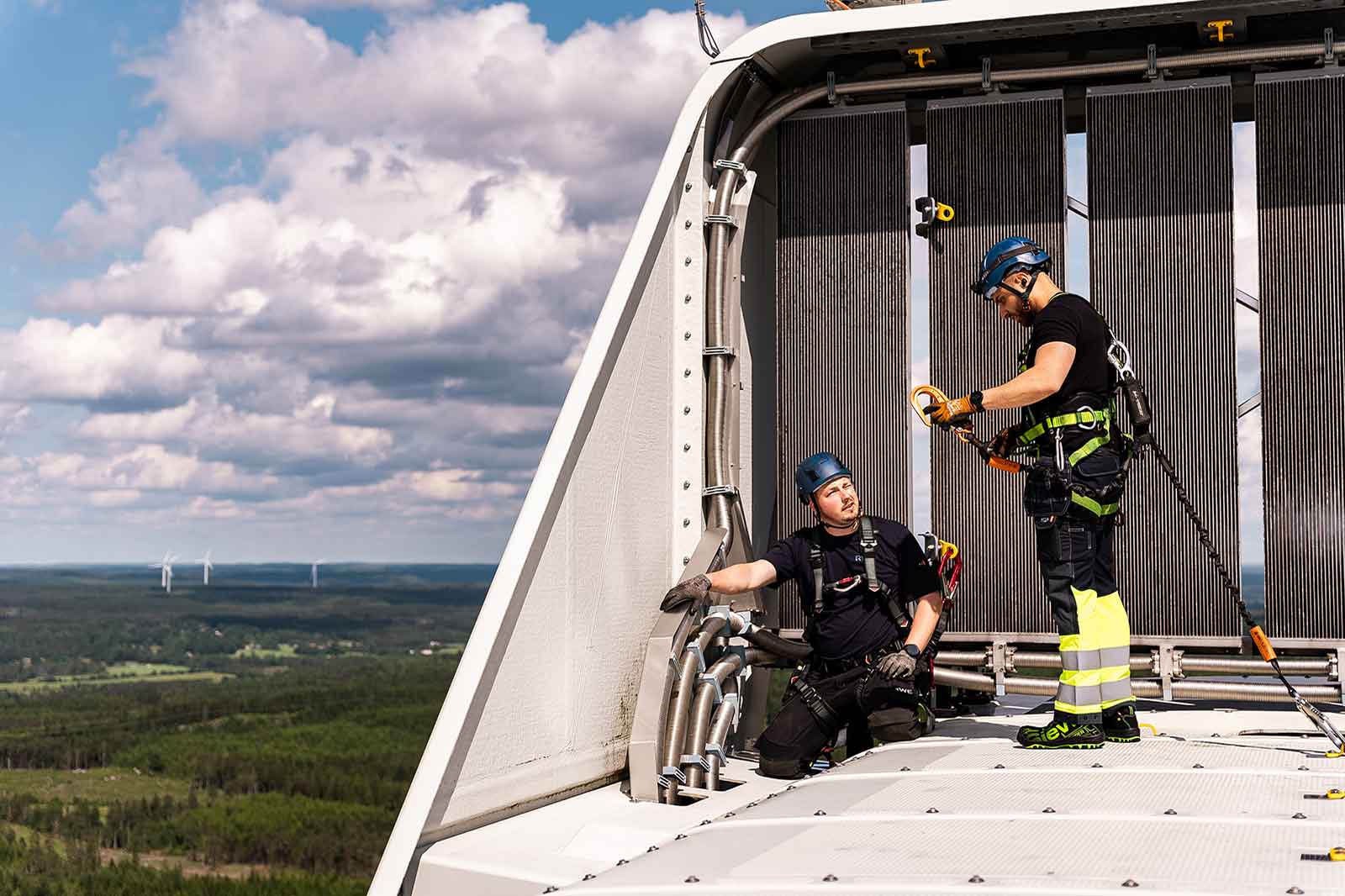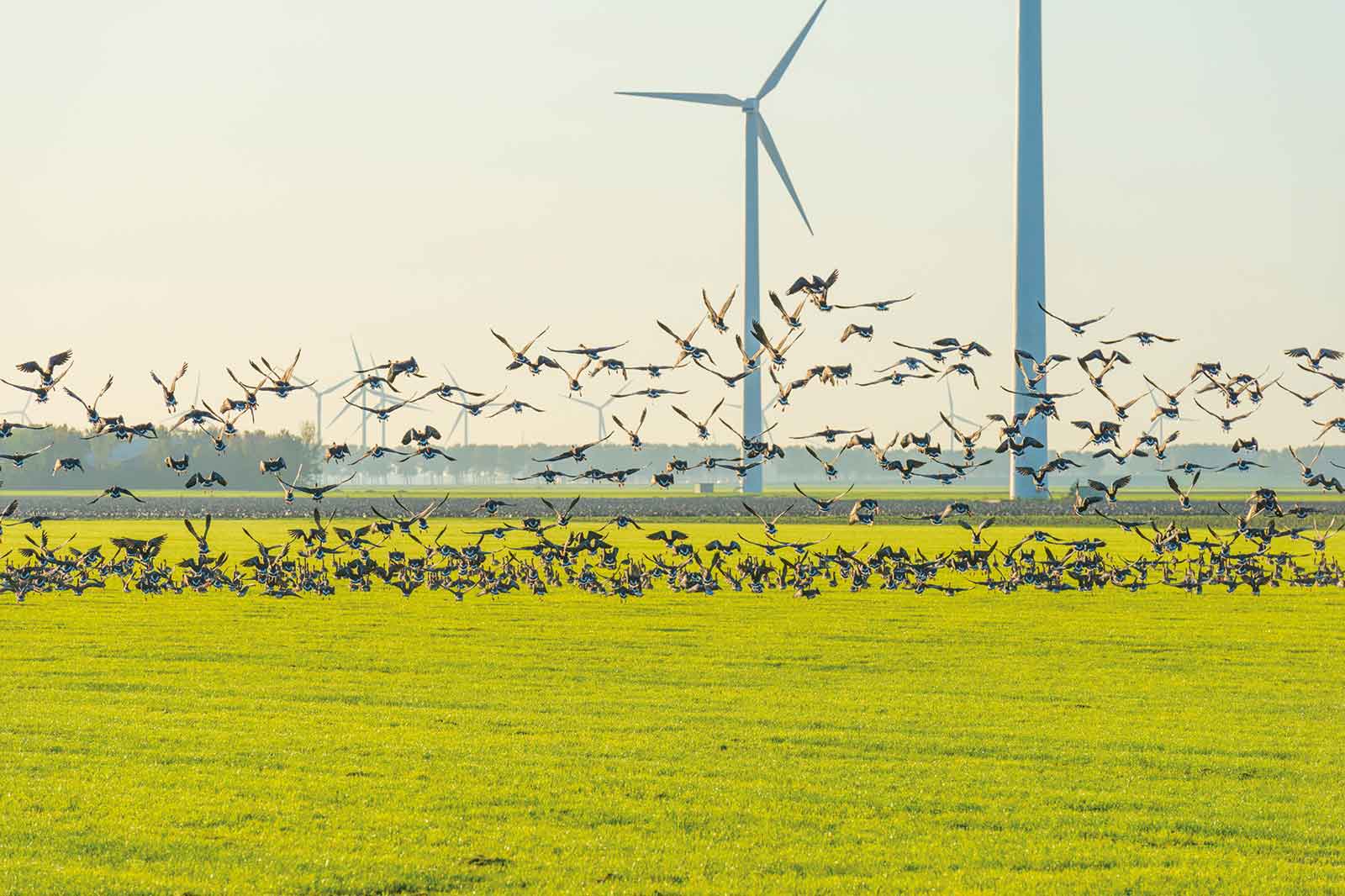Do you want to become our partner?
Help us expanding the production of renewable energy in the Netherlands.
With wind energy capacity increasing in the Benelux, both offshore and onshore, wind energy is becoming an increasingly important energy source. RWE is playing an important role in the energy transition in the Netherlands through its onshore wind farms.
RWE currently has a portfolio of just under 400 megawatts (MW) of established onshore power in the Netherlands. These wind farms were developed and built by RWE. They are also operated and maintained by its own local organisation and own personnel. At these 10 wind farms, there are small and large wind turbines with outputs varying from less than 1 MW to a maximum of 7.5 MW per wind turbine. The wind farms produce renewable energy comparable to the consumption of 370,000 households.
Wind energy essential to the energy transition
Wind turbines are one of the most effective and profitable ways of producing renewable energy. That is why wind energy is an important part of the energy transition. Certainly in the Netherlands.


Onshore wind farms in operation
Total established power
Projects under development and construction
RWE also uses its experience for international projects and shares its findings with partners from the worlds of science and business in innovative projects such as the construction and operation of wind turbines on the dyke in North Groningen.

RWE also initiated the study where one of the blades of a wind turbine is painted black. This should reveal whether painting a wind turbine blade black helps to reduce the number of bird collisions, among other things.
This study is perfectly in keeping with RWE’s sustainability strategy to use innovations to seek out the best way of generating wind energy.

Placing wind turbines affects the environment. Wind turbines must be safe, cause as little nuisance as possible to local residents and cause as little damage as possible to animals and plants. An independent research agency investigates the effects of wind turbines on the environment and the surrounding area. This includes examining whether the wind turbines meet the legal standards. It also examines how much cast shadow the wind turbines cause and whether measures should be taken to reduce the cast shadow. Other aspects being investigated include external safety, air quality, soil quality, archaeology and cultural history, water management, flora and fauna and radar disruption. The results of the studies are described in the Environmental Impact Assessment (in Dutch: MER).

The placement of large turbines affects the local landscape image. During the development phase, consideration is given to how best to fit the wind turbines into the landscape. This is supported with visualisations.

Rotating wind turbines make noise, which can be disturbing. The perception of noise depends, among other things, on the type of turbine and background noise. There are rules to limit noise pollution (the Activities Decree) that must not be exceeded.
Taking into account the legal requirements for noise standards, the noise contours are explained and how they affect the surrounding area.
Slag shadow is the moving shadow of a wind turbine caused by the sun on the rotor turning. This can be annoying. The flicker, the contrast, and how long you are exposed to it determine the degree of annoyance. To stay within the legal standards for cast shadow, turbines are sometimes automatically shut down when necessary.

When installing wind turbines, safety is important. The risk of accidents is low due to strict safety requirements. Possible risks are mast breakage or parts breaking off. In the MER, a risk analysis is carried out that identifies all the risks associated with the wind farm. Risks related to the location of vulnerable infrastructure (e.g. pipelines) are also included.

Whether a wind farm can coexist with nature is investigated prior to an initiative. This looks in particular at the impact on birds and bats, but also other flora and fauna. A follow-up study is then carried out by a specialist agency that makes year-round observations and prepares the nature assessment. This test is based on the Nature Protection Act and Nature Policy and assesses the impact of the construction and use of the wind turbines on:
The test determines whether the construction and operation of the turbines will unduly harm protected species. If so, it is assessed whether permission can be granted, possibly with conditions, or whether measures or compensation are required. If no negative effects are expected, no further assessment is necessary.

About three quarters of the Dutch are in favour of wind energy. But when a wind farm comes near, willingness to accept it usually drops. This is partly to do with how the environment is involved in the process. That is why the wind energy industry has drawn up a code of conduct. This “Code of Conduct on Acceptance & Participation of onshore wind energy” aims to make clear agreements on how the surrounding area is involved in the development of new wind farms. RWE wholeheartedly endorses this code of conduct.
View the code of conduct and the associated complaints procedure here (in Dutch).




